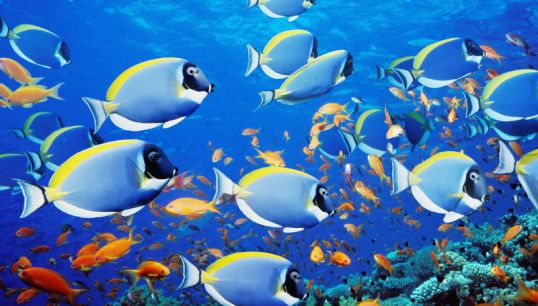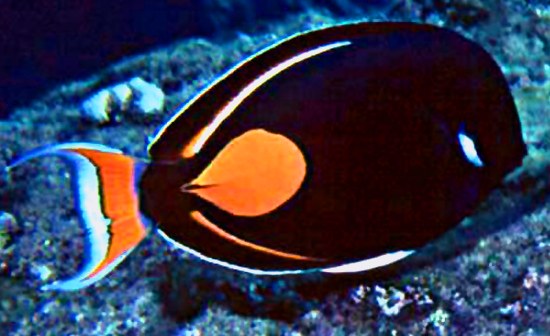Where did the name

Fish-surgeons (and sometimes fish-knives) these sea creatures are called their main characteristic razor-sharp spikes, which are located at the top and bottom of the tail. Fish use these spines for defense.
Sometimes careless swimmers and divers, preferring to touch the beautiful fish that get quite serious wounds. In such cases, usually, in addition to handling the wound required anti-allergic prophylaxis, as possible individual reactions.
Looks like a surgeon fish

Most surgeons small in size up to 40 centimeters in length, averaging 15-18 inches. However, there is still an amazing surgeon-the nose that grows up to a meter in length.
Fish-surgeons not very high body, large eyes and a small mouth. They eat mainly algae, sometimes including their diet with plankton.
The coloring of these fish is very beautiful and diverse. So, the whole body is striped surgeon painted with bright narrow blue and yellow stripes. Black surgeon – bright blue, with a yellow dorsal fin and a black head. A little more modest looks Arab surgeon with a gray-black stripes and orange spots under the pectoral fins.
Inhabited by sea surgeons
Fish-surgeons love to live in tropical waters among the coral reefs. Blue surgeon distributed in the Indo-Pacific region. Ibid., from Africa to the Hawaiian Islands, can be found striped of the surgeon. Black surgeon found offshore Kenya, Maldives, Seychelles, Indonesia.
Arab surgeon occurs in the Western Indian ocean from the Persian Gulf to the red sea.
Surgeons in the aquarium
The bright colors of these fish are very fond of aquarists. However, the content of the surgeons is not easy. First of all, fish of this species is extremely demanding on the cleanliness of the aquarium. Its volume, by the way, should not be less than 1000 liters. In addition, they compete for territory and are very aggressive towards other fish (especially different males).
In the nature of surgeons to be solitary gathering in the flock only during the breeding season.
In addition, fishes-surgeons very bad breed in captivity. That's why the sales tend not bred in the aquarium, and caught in the natural habitat of the species. These "wild" fish is very difficult to adapt to aquarium conditions.
